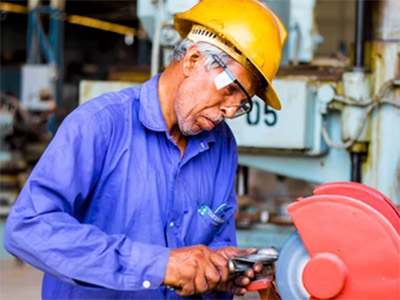Covid Stories PGH
LEARNING MORE ABOUT RACE AND COVID
 The impact of COVID on black and brown residents of Pittsburgh has been the result of two intersecting realities. The first is the situation of those residents before the pandemic, or what we can call their social location. Black and Latinx residents in the city faced race-based disparities long before COVID. They have historically had less local access to the basics of life, like nearby places to shop for food or get healthcare, than white residents. They live in households that are less likely than white households to have financial or technological resources to use in a time of crisis.
The impact of COVID on black and brown residents of Pittsburgh has been the result of two intersecting realities. The first is the situation of those residents before the pandemic, or what we can call their social location. Black and Latinx residents in the city faced race-based disparities long before COVID. They have historically had less local access to the basics of life, like nearby places to shop for food or get healthcare, than white residents. They live in households that are less likely than white households to have financial or technological resources to use in a time of crisis.
These realities of social location and racial disparity were magnified by the pandemic and its effect on infrastructure in the city. When we talk about infrastructure, we mean the essential services and structures that affect everyone in a city: for example, whether government services are available, or whether transportation is running through the city's neighborhoods. While COVID lockdowns and their impact on infrastructure and public services affected the residents of the city as a whole, the effect has been greater on Black and Latinx residents, who have had to live through COVID with greater risks and fewer resources or alternative options than other groups in the city.
Four areas of COVID’s impact on Black and Latinx residents in Pittsburgh stand out: the effects on access to food, access to healthcare, access to learning, and the situation of “essential workers”.
ACCESS TO FOOD
 Before COVID, communities such as Pittsburgh's Hill District and Homewood could be considered “food deserts”. This means that residents had limited access in the community to a wide range of food, often having to rely on small corner stores that did not always have fresh produce or other items needed for a healthy diet. One long-term study of food insecurity in the Hill District and Homewood neighborhoods found that many residents routinely traveled outside the neighborhood to do their food shopping, most relying on the public bus system to enable them to do so. This meant that when bus schedules and capacities were cut back during the first wave of COVID lockdowns, many families’ access to the places they shopped for basic goods was reduced or cut off.
Before COVID, communities such as Pittsburgh's Hill District and Homewood could be considered “food deserts”. This means that residents had limited access in the community to a wide range of food, often having to rely on small corner stores that did not always have fresh produce or other items needed for a healthy diet. One long-term study of food insecurity in the Hill District and Homewood neighborhoods found that many residents routinely traveled outside the neighborhood to do their food shopping, most relying on the public bus system to enable them to do so. This meant that when bus schedules and capacities were cut back during the first wave of COVID lockdowns, many families’ access to the places they shopped for basic goods was reduced or cut off.
While many residents in those neighborhoods used SNAP food benefits or food banks to help feed their families, once COVID hit, the rate of use of those benefits and resources did not increase. This means that for people experiencing new food insecurity due to the pandemic, it seems to have been difficult for them to access the services for the first time. The closure of government offices due to COVID meant the loss of in-person guidance to fill out applications and to negotiate the process of becoming eligible for benefits for the first time. The closures of local community centers and other agencies that maintained food pantries closer to people's homes, due to concerns over COVID transmission, also reduced both a source of information and help as well as a source of food.
A major source of food support for children and families was also cut off when schools and after-school programs closed during the pandemic. For students in the Pittsburgh public school system, before COVID, breakfast and lunch were available freely to all students, and some schools and community programs also offered weekend backpacks of food to children and families who needed that support. This nutritional support was lost, and families faced the need to feed children at home just as many families were experiencing reductions in household income or job loss. While meals were eventually made available to students through the school system and other sites, this required that families travel daily to one of a few sites around the city. Similarly, while food banks in the Pittsburgh area received generous donations and held additional food giveaway programs, many of these were only accessible by car in the first months of the pandemic.
Our community partners were creative in finding ways to meet emerging needs. Project Oasis in Homewood expanded its feeding programs and direct food relief in its neighborhood, building a bridge between available food resources and people who had difficulty traveling to access them; similarly, in the Hill District, Macedonia FACE expanded its “lunch box” program to deliver food to families. East End Community Ministries expanded their food pantry resources to a wider group of families in need, and continues to serve that wider client base, finding that the pandemic and its economic effects have apparently created a long-term shift in those who will need that support to feed their families. Casa San Jose built another sort of bridge for Latinx families in the city, advocating and working to translate information about food and other basic resources for the multiple groups within the community who are non-English speakers.
Learn more:
- Tamara Dubowitz, et. al. “Food Insecurity in a Low-Income, Predominantly African American Cohort Following the COVID-19 Pandemic.” American Journal of Public Health (2021) 111, 494-497; available at https://ajph.aphapublications.org/doi/full/10.2105/AJPH.2020.306041
- Tamara Dubowitz, et. al. “Healthy Food Access or Urban Food Desert Residents: Examination of The Food Environment, Food Purchasing Practices, Diet And BMI”. Public Health Nutrition, (2015). 18(12), 2220-2230. Available at https://www.cambridge.org/core/journals/public-health-nutrition/article/healthy-food-access-for-urban-food-desert-residents-examination-of-the-food-environment-food-purchasing-practices-diet-and-bmi/E797C1EBA53A449BC10BFA3A1F9FFA11
- Feeding America, “The Impact of the Coronavirus on Food Insecurity.” (2021) Available at https://www.feedingamerica.org/research/coronavirus-hunger-research
IMPACT ON HEALTH AND HEALTH CARE
 Before the COVID pandemic struck in early 2020, African American and Latinx residents in the United States already faced racial disparities in access to healthcare. These included lower rates of access to clinics and hospitals in their neighborhoods, as well as lower rates of basic and preventative care and as well as care for chronic conditions. Many such conditions, including heart disease, diabetes, high blood pressure and breathing problems, are “co-morbidities” in the case of COVID, increasing the risk of serious side effects.
Before the COVID pandemic struck in early 2020, African American and Latinx residents in the United States already faced racial disparities in access to healthcare. These included lower rates of access to clinics and hospitals in their neighborhoods, as well as lower rates of basic and preventative care and as well as care for chronic conditions. Many such conditions, including heart disease, diabetes, high blood pressure and breathing problems, are “co-morbidities” in the case of COVID, increasing the risk of serious side effects.
Once the pandemic hit, the combination of these health-related disparities and other aspects of social location resulted in an illness and death rate from COVID far higher for Black and Latinx persons than for whites. This disproportionate illness and death rate from COVID was made worse by the higher rates of Black and Latinx persons in job categories that involved more contact with the public and thus more risk, particularly before a COVID vaccine was available.
In addition, the closure of local community centers and schools that affected people's access to food and other services also reduced children and families’ access to medical care. As the pandemic unfolded, many urban communities received access to COVID testing and vaccines later than other communities, and in some cases in Western Pennsylvania, vaccines went unused in some outlying and rural communities while people in urban centers were unable to find them anywhere locally. For people without a car, access to vaccines as well as to testing has been further complicated and depends on either their local availability in the community itself or access to transportation that can get them to where those services are located. Our community partners have each been active in spreading the word about available vaccines and testing and working to educate their neighborhoods and clients about COVID risks, symptoms, and prevention.
For recent immigrants and particularly undocumented residents, the risks of exposure through work and difficulty in accessing both tests and vaccines were heightened by a lack of information available in translation as well as fears that involvement with the health system could result in exposure to the legal system or immigration authorities, posing a risk not just to the individual but to their family.
Learn more:
- Centers for Disease Control, “COVID-19: Health Equity Considerations and Racial and Ethnic Minority Groups.” April 19, 2021. Available at https://www.cdc.gov/coronavirus/2019-ncov/community/health-equity/race-ethnicity.html
- Sun, Leana, “CDC: Covid-19 Death Toll Is Twice as High Among People of Color Under Age 65 as For White Americans.” The Washington Post. July 10, 2020. Available at https://www.washingtonpost.com/health/2020/07/10/cdc-covid-19-death-toll-is-twice-high-among-people-color-under-age-65-white-americans/
- Wan, William. “Coronavirus Kills Far More Hispanic and Black Children than White Youths, CDC Study Finds.” The Washington Post. September 15, 2020. Available at https://www.washingtonpost.com/health/2020/09/15/covid-deaths-hispanic-black-children/
IMPACT ON LEARNING
 At the beginning of the pandemic in the winter of 2020, Pittsburgh public schools, along with many other school systems, shut down their classrooms and suspended in-person learning to prevent COVID transmission. However, many urban public systems did not have technology in place to allow for an immediate transition to online learning for students. In Pittsburgh, this resulted in several weeks without any instruction, along with an effort to provide as many students as possible with laptops or other devices to enable them to connect with their teachers and continue their classes in some way. At the start of the pandemic, while teachers and staff willingly and creatively pivoted to work with their students online, the Pittsburgh public school system had 7,000 fewer devices than students who needed them, in a district where many families did not have a computer or device in the household already for children to use. One of our main emphases through our funding and through the work of our community partners was to target donations to fill in some of these gaps, and through extensive fundraising the district was able to provide at least one device per household for students in the system as the 2020-2021 school year began.
At the beginning of the pandemic in the winter of 2020, Pittsburgh public schools, along with many other school systems, shut down their classrooms and suspended in-person learning to prevent COVID transmission. However, many urban public systems did not have technology in place to allow for an immediate transition to online learning for students. In Pittsburgh, this resulted in several weeks without any instruction, along with an effort to provide as many students as possible with laptops or other devices to enable them to connect with their teachers and continue their classes in some way. At the start of the pandemic, while teachers and staff willingly and creatively pivoted to work with their students online, the Pittsburgh public school system had 7,000 fewer devices than students who needed them, in a district where many families did not have a computer or device in the household already for children to use. One of our main emphases through our funding and through the work of our community partners was to target donations to fill in some of these gaps, and through extensive fundraising the district was able to provide at least one device per household for students in the system as the 2020-2021 school year began.
While research is still going on about the impact of the pandemic on learning in Pittsburgh, across the nation school systems have found that Black and Latinx students have been especially hard hit in terms of learning loss, absenteeism, and learning slowdown. As the pandemic moved into a second school year, it became clear devices alone were not the answer to preventing learning loss. Students had also lost access to the libraries and community centers that had provided learning support for them before the pandemic, and families who experienced problems with provided laptops also needed support to troubleshoot problems and do repairs where necessary. Households with multiple students had to find ways to share available devices as well as the attention of adults in the household to help them understand their assigned work and how to use the online system. For Black and Latinx parents and grandparents, many of whom did not have the ability to work from home, this involved a difficult balancing act between care, work, and supervising schooling. For families with weak or non-existent internet access—the situation for many households in Pittsburgh’s poorer neighborhoods—this too needed to be resolved before students could participate. Our community partners were active on the front lines in both identifying and advocating around these issues as well as in filling the gaps through participation in creating "learning hubs" for online students who could not access or be supervised in online learning at home, as well as in raising money to purchase devices and internet access for students to use and providing tutoring and family support as in-person work has become possible.
Learn more:
- Dorn, Emma, et. al., COVID-19 and Education: The Lingering Effects of Unfinished Learning. McKinsey and Company, July 27, 2021. Available at https://www.mckinsey.com/industries/public-and-social-sector/our-insights/covid-19-and-education-the-lingering-effects-of-unfinished-learning
- Johnson, Tylisa C. “How Pittsburgh-Area Learning Hubs Helped Students Through Covid and Could Change How Public Education Is Delivered.” PublicSource. March 17, 2021. Available at https://www.publicsource.org/learning-hub-student-disparities-pittsburgh-education/
- Kozakowski, Whitney, et.al. “Changes In Academic Achievement in Pittsburgh Public Schools During Remote Instruction in The Covid-19 Pandemic.” Mid-Atlantic Regional Education Laboratory, Institute of Education Sciences, U.S. Department of Education. Presentation to the Pittsburgh Board of Education, September 14, 2021. Available at https://ies.ed.gov/ncee/edlabs/regions/midatlantic/app/Docs/Technicalassistance/PPS_pandemic_student_outcomes_for_school_board_508.pdf
- Mervosh, Sarah. “The Pandemic Hurt These Students the Most.” New York Times, July 28, 2021. Available at https://www.nytimes.com/2021/07/28/us/covid-schools-at-home-learning-study.html
- Office of Civil Rights, U.S. Department of Education. Education in a Pandemic: The Disparate Impacts of COVID-19 on America’s Students. June 2021. Available at https://www2.ed.gov/about/offices/list/ocr/docs/20210608-impacts-of-covid19.pdf
IMPACT ON WORKERS
 Workers in Pittsburgh’s Black and Latinx communities work across all the sectors of the city’s economic life. However, as in other urban centers, they are disproportionately represented in those jobs that are classified as “essential workers”: health care, public transit and other public services, care for the elderly and disabled, hospitality, and retail. All these jobs involve interaction with the public in some way, and in nearly all of them, working at home was not an option during the pandemic because there was no way the job could be performed away from their public setting. For many Black and Latinx workers, their choice became taking a daily risk that could expose themselves and their families to COVID, or not earning a paycheck at all.
Workers in Pittsburgh’s Black and Latinx communities work across all the sectors of the city’s economic life. However, as in other urban centers, they are disproportionately represented in those jobs that are classified as “essential workers”: health care, public transit and other public services, care for the elderly and disabled, hospitality, and retail. All these jobs involve interaction with the public in some way, and in nearly all of them, working at home was not an option during the pandemic because there was no way the job could be performed away from their public setting. For many Black and Latinx workers, their choice became taking a daily risk that could expose themselves and their families to COVID, or not earning a paycheck at all.
Other factors also increased the challenges that these workers have faced during the pandemic. Lower rates of car ownership within these communities meant that to get to work, these workers were exposed still further to the risk of illness by needing to ride public transportation. In addition, many workers in retail and food-service settings became vulnerable to layoffs due to the impact of COVID lockdown, without having another source for benefits that come through work insurance. The extended, politicized negotiations over COVID unemployment and COVID assistance to families meant that people in need due to job loss that was no fault of their own spent months in some cases waiting for relief programs to be available.
For small business owners in minority communities, the pandemic brought an additional set of challenges. While “paycheck protection” and other loan programs were made available to small businesses, many Black and Latinx small business owners are in communities that do not have an established neighborhood bank that is familiar with the community or its businesses. Black and Latinx small business owners were thus less likely to have access to these COVID emergency loans either because they lacked an existing relationship with a bank that was making them available, because banks prioritized larger or more profitable customers, or because their business history, on paper, was seen as too short or too risky. For many businesses, particularly those just starting out, the lack of accessible emergency funding combined with a lack of funds on hand to continue paying employees during shutdowns meant their business closed as the result of the pandemic—resulting in a loss for their community as a whole.
Learn more:
- Rogers, Tiana N et al. “Racial Disparities in COVID-19 Mortality Among Essential Workers in the United States.” World Medical & Health Policy, 10.1002/wmh3.358. August 5, 2020. Available at https://www.ncbi.nlm.nih.gov/pmc/articles/PMC7436547/
- Selden, Thomas M. and Terceira A. Berdahl. “COVID-19 and Racial/Ethnic Disparities in Health Risk, Employment, and Household Composition.” Health Affairs. Vol. 39, No. 9. July 14, 2020. Available at healthaffairs.org/doi/10.1377/hlthaff.2020.00897?url_ver=Z39.88-2003&rfr_id=ori%3Arid%3Acrossref.org&rfr_dat=cr_pub++0pubmed
